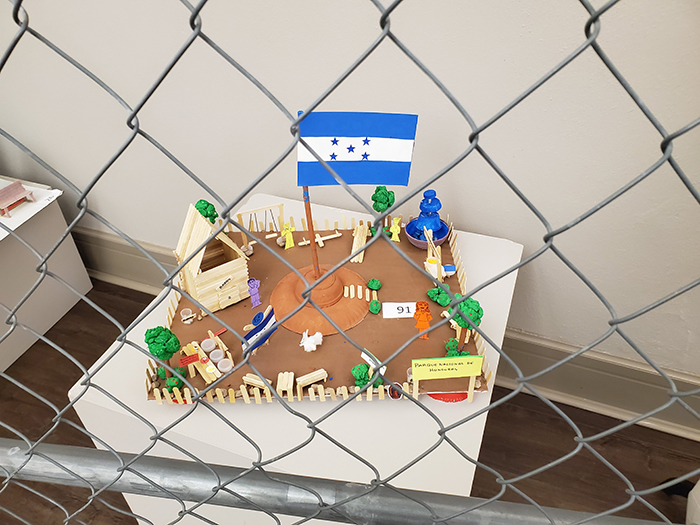UTEP Exhibit Gives Voice to Tornillo’s Silenced Teens
Last Updated on April 01, 2019 at 12:00 AM
Originally published April 01, 2019
By UC Staff
UTEP Communications
The University of Texas at El Paso’s Centennial Museum and Chihuahuan Desert Gardens will host an exhibit showcasing art created by teenagers from various Central and South American countries who were held in a secured tent city in Tornillo, a small town of about 1,600 people about 40 miles southeast of El Paso.

The University of Texas at El Paso’s Centennial Museum and Chihuahuan Desert Gardens will host an exhibit showcasing art created by teenagers from various Central and South American countries who were held in a secured tent city in Tornillo, a small town of about 1,600 people about 40 miles southeast of El Paso.Video by UTEP Communications
“Uncaged Art: Tornillo Children’s Detention Camp,” is a multisensory exhibit based on art that the teenagers created during their confinement. The show opens April 13, 2019, with a reception from 2 to 4 p.m. The exhibit closes Oct. 5, 2019.
The U.S. Department of Health and Human Services detained more than 6,000 teenagers from Honduras, Guatemala, El Salvador and other Central and South American countries from June 2018 through January 2019 in the temporary detention center on the eastern fringe of El Paso County.
Among the witnesses who stood vigil outside the camp was Yolanda Chávez Leyva, Ph.D., associate professor of history and director of UTEP’s Institute of Oral History. She would go on her days off out of concern for the welfare of those unaccompanied minors in the camp.
Leyva said a camp source told her that social studies teachers assigned to the shelter gave a four-day art project that the children could do individually or in groups. The only instructions given to the detainees was to think of their home communities. She said the teenagers created hundreds of drawings, sketches, paintings, dresses and sculptures that involved birds, parks, churches and a soccer field. Camp officials judged the art and decided which pieces to display around the camp.
When the government decided to close the site in January 2019, workers began to discard the artwork. A Catholic priest from El Paso who served the children asked the caretakers for a chance to find someone who might want the art. He called Leyva, a co-founder of El Paso’s Museo Urbano, a community museum near Downtown El Paso that researches and preserves borderland history. Leyva said the priest hoped that the museum and UTEP might be able to protect the art. After consultation with Denis O’Hearn, Ph.D., dean of the College of Liberal Arts, Leyva agreed to store the artwork at UTEP.
“With our mission of access and excellence … and our mission to engage with our community on both sides of the border, we have created a sense of trust where people in the community feel that they can entrust us with their most valued objects,” he said. “This is something that other universities in the U.S. rarely have. It makes UTEP special and we cannot ever lose this.”
The exhibit sponsors are UTEP, the Centennial Museum, the Hope Border Institute, Museo Urbano, the renowned muralists Los Dos, and UTEP’s departments of Theatre & Dance and Facilities Management.